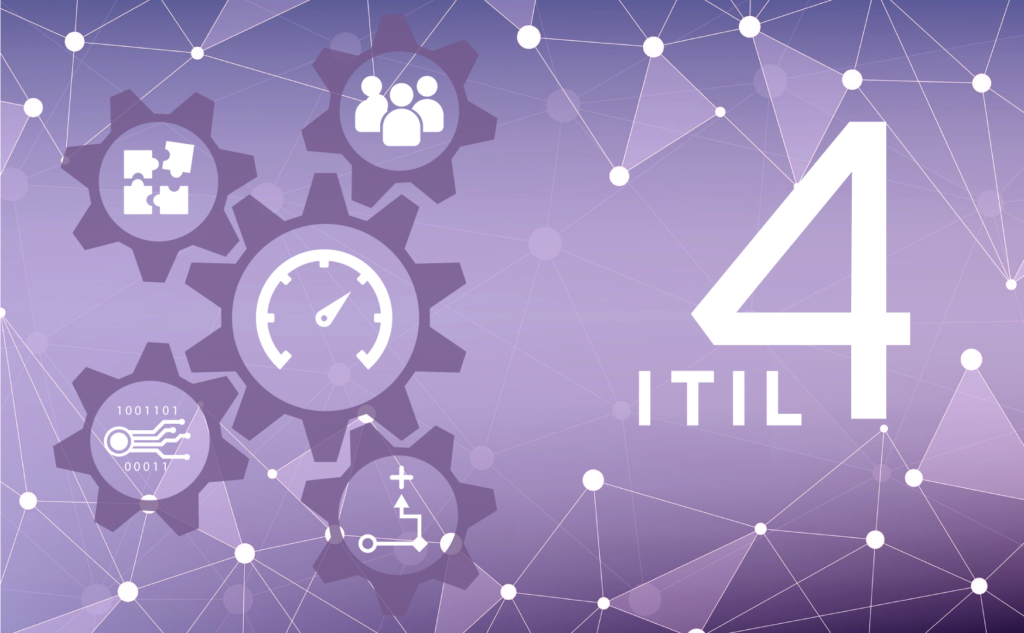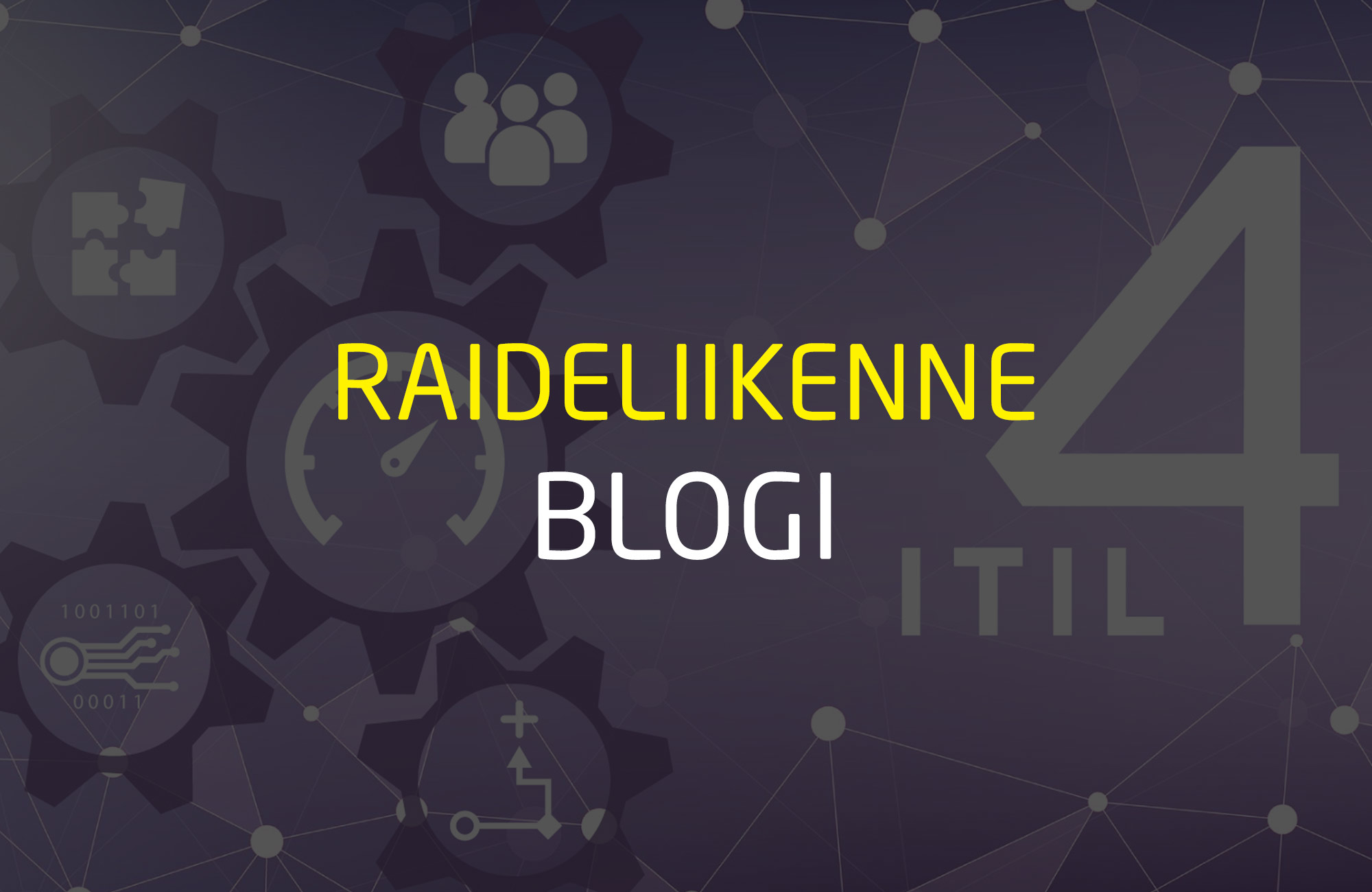This article explores the prospects for implementing service management using the Information Technology Infrastructure Library (ITIL) framework. The article describes the journey towards improved performance in service delivery at Mipro. The company specialises in interlocking and traffic management systems, whereby one of its business areas focuses on developing solutions for railway and local railway traffic. Within this context, implementation is understood to mean a process that applies the service management principles and best practices defined by ITIL.
Understanding the terminology
The internationally recognised terminology is generally one of the main benefits of the ITIL reference framework. While ITIL primarily focuses on the delivery of IT services, it also covers the broader realm of service management. Even when we acknowledge the shortcomings, translation can lead to misunderstandings. People can interpret terms in various ways. We can talk about our company’s different business capabilities and its ability to deliver services. ITIL has applied a new approach by launching the term “practice” as a new level of service management capability. This article simply suggests that readers should see a “practice” as a formal method that is helping our company enhance its ability to deliver high-quality services. This article will subsequently also deal with the initials ITSM, which stand for Information Technology Service Management. It would be possible to speak about service management alone, but IT is increasing forming the background for the provision of services in the form of various platforms and services.
The current state
Rail transport differs from other businesses in that the lifecycles of the systems it uses are exceptionally long. This fact poses challenges to both lifecycle management and service management. The service contracts concluded to date have also been highly diverse and significant amounts of time have had to be spent customising them during the negotiation process. ITIL provides a service management model that is suitable for the railway industry. This model also enables the agreement phase to be standardised and service contracts, including the associated service descriptions, to be formulated. The development of information technology and its increasing support role for all kinds of business also constitutes a new perspective. Moreover, increasing numbers of railway systems are now operating on different IT platforms.
With regard to practices, Mipro is already using several of the service practices described by ITIL. We currently provide Service Desk functions using ITIL practices such as
- Incident Management
- Service Request Management
- Monitoring & Event Management
- Problem Management.
The implementation has occurred at the basic level to enable us to meet our service level agreements, but there is recognised potential for further development. Our service delivery unit operates across three levels, each handling specific aspects in order to ensure comprehensive support.
The Service Desk (1st level support) processes incidents and service requests. The 2nd level support is provided by a group of experts specialising in hardware and software issues, while the product development team (3rd level support) is responsible for product maintenance and development. The IT unit is primarily responsible for the platforms. The 2nd level support handles complex cases using Kanban, while the 3rd level support focuses on product development with the assistance of Scrum. This structured approach ensures the specialised handling of each aspect within the provision of the service.
The aforementioned practices have enabled us to align the service delivery functions that support our current business operations within the ITIL framework and we intend to continue that development.

The development project
A comprehensive development project was then initiated in order to enhance our operating performance. The overarching goal is to implement common service practices across all areas of business. However, applying ITIL to railway services does not come with any ready-made solutions. The ongoing implementation requires adaptation to evolving needs with regular reviews and updates in order to ensure continued effectiveness while meeting the business objectives. This might be framed as a development initiative when enhancing existing functions, but it yields specific advantages and efficiencies when executed as a project. On the other hand, the development is systematic and long-term, so it is also possible to talk about the program at a later stage.
According to Albert Einstein, “Any intelligent fool can make things bigger, more complex, and more violent. It takes a touch of genius—and a lot of courage to move in the opposite direction.” [1]
When describing processes and practices, it is sometimes easier to take an “outside-in” approach to designing a customer service path; as opposed to the more traditional process-oriented mindset. An outside-in approach means that the perspective starts from the customer and moves towards us.
Simple descriptions and understandable documentation emerge as the key goals in this development project. The project covers both short-term improvements, such as documentation enhancement, and long-term initiatives, for example conducting a detailed examination of the service desk as a practice. Other key focus areas that are especially emphasised throughout the company involve the role framework, KPIs (key performance indicators) & reporting and ITSM (IT Service management) tool development.
ITIL is one framework among others, but it recognises itself as more of a support framework than a dominant one. As such, ITIL prefers to adopt existing agile frameworks as part of its own, rather than reinvent the wheel. ITIL uses concepts from other practices, such as Agile, Lean and DevOps. There is a clear synergy between these frameworks. It is possible to speak of either an iterative approach or the concept of continuous improvement, depending on what is being implemented.
The relationship between ISO 20000 and ITIL is mutual and complementary, thereby enhancing our approach and implementation. The documentation is based on the specifications outlined in this standard. ITIL represents a set of established best practices, while ISO 20000 is the recognised standard. We aspire to obtain the ISO/IEC 20000 certificate, but the scope of the content is still under consideration.

Transformation
The process of implementing new operating models is recognised as challenging, because it involves translating a grand vision into a practical plan, which is no simple task. To make this happen, the leaders, delivery teams and everyone involved need to work together. We have consistently strived to follow these principles since commencing the implementation of the service management principles. The early commitment from leadership and the investments in the necessary resources are positive signs for the success of the ITIL implementation.
According to [2], there are four keys to achieving ITSM success:
1. Avoid the “big bang” approach: ITIL has been specifically designed as a framework for achieving incremental and continuous improvement, not overnight results.
It is important to adopt a mindset of continuous improvement in the team’s workflow and to advance things iteratively rather than trying to achieve too much over a long period of time.
2. Establish executive sponsorship: transformation can fail to deliver the desired value due to a lack of planning and support from executive leadership.
Senior management should exhibit competent leadership. The leadership team must be committed and have clear goals and quality policies that have not only been adopted, but have also been effectively communicated to others.
3. Invest in the required resources: ITIL involves a long-term investment in the transformation of management. Many organisations fail to make the required investments in the infrastructure, tools and personnel.
It is very important to identify the organisation’s key personnel and define the essential requirements and responsibilities in the change management and the subsequent services.
4. Manage organisational change: ITIL is a strategic initiative that must be embraced by the company and its IT management.
The importance of strategic recruitment in the midst of change can never be overemphasised. Flexibility, clear communication and a focus on employee involvement and support are key success factors.
The role framework & training
It is crucial to grasp the nature of the service, its components and the overall management from the very beginning. Our efforts involve creating a role framework and training programs that focus on empowering individuals through various training initiatives. A group of key personnel undergoes the ITIL 4 foundation training, while tailored training is planned for the others. There are also plans to develop our training materials, including an orientation program for new employees.
Accountability in the service delivery unit is key. That is why the role of the service process owner has been introduced. Each service process and practice already has or will have a designated person who is responsible for performing the development tasks, such as measures to improve service delivery, planning metrics and instructions on service delivery operations. These individuals collectively form the Service Management Board, which addresses the challenges associated with the provision of services at its monthly meetings.
Let’s take a role that is frequently overlooked, but is crucial, i.e. the operative team leader. This role includes overseeing how incidents are managed, keeping track of resolution times, optimising resources, ensuring accurate ticket classifications and facilitating communication between the service delivery teams. Empowering these operative team leaders leads to substantial improvements in the overall quality and efficiency of the service delivery operations.
Participatory productization
Services must clearly undergo productization, but basic documentation on the current state is useful before delving deeper into the productization of the service portfolio. This also involves an iterative way of progressing towards the goal. That is why the ongoing tasks are focused on productizing the process map, the service processes (aka Practices) and the role framework, so that any possible resources can be mapped.
An inclusive approach was found to be beneficial during previous implementations. Like any other practice, ensuring the success of productization ultimately relies on people. One motivating factor could involve the fact that individuals learn and develop throughout the process. An iterative approach may not initially yield perfect results, but it involves small adjustments and a step-by-step progression. Productization likewise occurs gradually and iteratively, allowing for adjustments to be made throughout the process.
1. Internal productization involves the description and clarification of the service delivery operations. Defining the service processes (aka practices), methodologies and responsibilities is a key task in internal productization.
2. External productization means explaining the visible service components to customers. It involves establishing a shared understanding of what is important to customers, such as service practices and the work carried out within them. This information can then be integrated into the service descriptions and sales materials.
The significance of participation as a best practice is emphasised by utilising the contributions from ITIL and lean practices. An inclusive approach that is based on past implementations is seen to be beneficial in that it accounts for the iterative nature of productization.
The courage to change
Emphasising the importance of the “courage to change” renders the involvement of the people in the early change process more substantial, thereby making them essential to driving the change forward. The level of resistance may depend on how well the changes have been justified and practically thought out. The processes should not be overly complicated; their purpose is to simplify the workflow and make life easier. Engaging people in the change from the early stages encourages them to become key contributors who will drive the change forward when the time comes.
ITIL introduces seven guiding principles (fig. 4) that are worth remembering. A holistic mindset helps break down any silos, thereby encouraging everyone to consider what is best for the team, for the unit and ultimately for the company. The goal should always be optimisation and, if possible, automation.
The service management handbook
Mipro is currently outlining its own service management handbook. In addition to the workflows, templates and instructions, this handbook will also describe the operating models based on the ITIL framework. This includes the terminology, roles and all the essential aspects related to service management. Service practices and their activities are internally productized and illustrated. The aforementioned outside-in approach is considered when creating visual descriptions from the customer’s perspective. This plan serves the dual purpose of generating material to support both sales and service management and the customer at the same time.

Security and quality
It is important to highlight the importance of information security, cybersecurity and quality as integral aspects of service management. Each of these areas has its own roadmap and responsible individuals in the company and they are taken seriously. Effective communication among these operations is vital for the delivery of services reliably and responsibly.
Information security is a concern for everyone and it is crucial that everyone comprehends its significance. The rise in cybersecurity attacks on platforms and systems poses extra challenges for service management. The quality perspective is closely tied to service management, thereby influencing how well we can truly fulfil our promises.
The ITSM tool and reporting
The substantiation of controlled work and promises kept to customers is emphasised. The development of the ITSM tool is discussed as a critical aspect of service management. The ultimate objective is to utilise a single and optimised ITSM tool for efficient ticket logging and well-defined metrics.
The development of the ITSM tool is also integral to service management. Ensuring the involvement of practice owners in the tool development guarantees alignment with the process. Mipro is currently using various ticketing tools and one goal of the development project is to facilitate the implementation of a single ITSM tool that contains as many modules as possible, thereby making the workflow as effortless and traceable as possible. It is important to establish clear KPIs and to integrate them into the reporting tools with the goal of automating the reporting process.

New services and practices
Servitization is an ongoing process and its systematic promotion is ongoing. It also takes time to build up a comprehensive service portfolio. Meanwhile, there is a perpetual need to identify and describe any new practices that support the company. Upcoming plans include addressing the spare parts management, configuration management and change management within the scope of the service management development. In addition, the company’s extensive experience is one of its greatest strengths, so the consulting could also be formulated as a service. New implementations will be planned and executed as needed following a proven model.
The transition to a service-oriented organisation brings challenges, which emphasises the importance of targeted role allocation and role empowerment in service delivery. A participatory approach is emphasised as an effective way of engaging the participants, changing mind-sets and encouraging innovation. It is worth considering whether the decision-making can be approached differently and individuals encouraged to take on more responsibility and participate in decision-making.
The most successful approach involves a participatory method of developing and refining the processes. This includes engaging participants, changing their perspectives and encouraging innovation. The involvement of individuals in both the planning and implementation stages is beneficial despite the potential challenges. Even though it might take more time initially, the investment will pay off when launching operating models.
The key is to start with small, manageable steps and to take the time required for a thorough understanding of the current situation while aligning with management. Documentation is crucial; the methods, instructions and role descriptions serve as important evidence of a well-thought-out process. Instead of attempting massive changes all at once, focus on making gradual improvements in one or two areas at a time. Break the services down into smaller, more manageable modules, if needed.
We aim to improve our processes to ensure greater efficiency and effectiveness, always with the aim of increasing customer satisfaction.
The counter-example is representative of the kinds of issues often found with model checking, as it requires something very improbable and counterintuitive to take place. When specifying test cases, such a sequence of events may not come to mind or even necessarily be that easy to replicate in a test suite. With model checking, it is sufficient to formalize the functional requirement and let the algorithms find the counter-example.
Sources
[1] https://quotepark.com/quotes/1874757-albert-einstein-any-intelligent-fool-can-make-things-bigger-more/
[2] Esposito, A.; Rogers, T.: „Ten Steps to ITSM Success: A Practitioner’s Guide to Enterprise IT Transformation“, IT Governance Publishing, 2013
[3] ITIL Foundation, ITIL4 Edition, Axelos, 2021
[4] Agutter, C.: ITIL 4, Create, deliver and support, IT Governance Publishing, 2021
RELATED CONTENT
author

Matti Kuivalainen
Product Manager of Services
Mipro Oy
Matilla on yli 20 vuoden kokemus palveluiden hallinnasta. Hän on työskennellyt prosessiomistajana EMEIA tasolla sekä projektipäällikkönä kansainvälisissä projekteissa, joiden tarkoituksena on ollut optimoida ITIL:in parhaat praktiikat eri kokoisten asiakasyritysten tarpeisiin. Miprolla Matti työskentelee Product Manager of Services -tehtävässä, ollen vastuussa Mipron palveluhallinnan kehittämisestä sekä johtamisesta.


